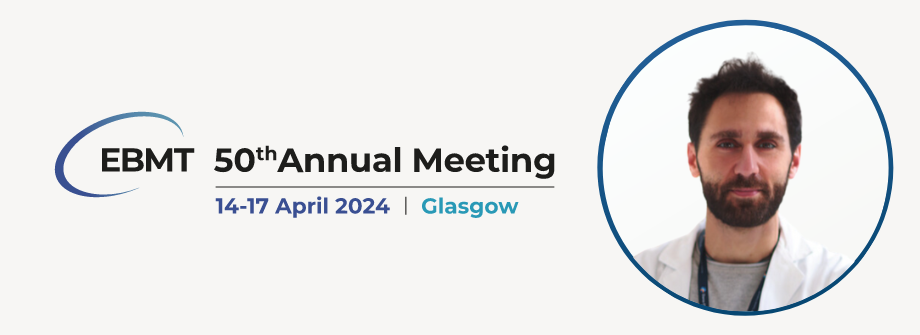
Gabriele Casirati
Dana Farber Cancer Institute, Boston; Boston Children’s Hospital, Massachusetts, USA
What initially sparked your interest in the field of oncology, and motivated you to continue researching?
My interest in the field of oncology was initially sparked during my training as a haematologist, where I was directly involved in the treatment of patients affected by haematological malignancies, who were undergoing bone marrow transplantation. Witnessing the intricate interplay between patients, disease features, treatment, and outcomes ignited a growing desire to better understand the determinants of treatment failure and success. I decided to approach basic and translational research in the Telethon Institute for Gene Therapy (SR-TIGET), Milan, Italy, where I studied acute myeloid leukaemia (AML) through in vivo models and single cell RNA sequencing. This experience catalysed further research endeavours when, after my haematology residency, I moved to the Dana Farber Cancer Institute, Boston, and the Boston Children’s Hospital, Massachusetts, USA, where I developed the epitope editing approach.
You were recently awarded the EBMT Jon J. van Rood Award, which celebrates outstanding contributions in the field of HCT and immunotherapy. Can you tell us more about the research that led you to win this award?
I hypothesised that precise engineering of antibody-protein interaction could endow haematopoietic stem cells with selective resistance to immunotherapies. This approach, termed epitope editing, in combination with bone marrow transplantation, allows the use of targeted therapies for AML. We provided proof of concept experimental data, showing that it is possible to generate a cancer-restricted antigen by manipulating healthy haematopoietic stem cells, which, in turn, enables the reduction of undesired toxicities, and improves anti-tumoural activity.
What impact do you hope your research will have on patient treatment and care?
The most direct impact of our studies will be the development of a new therapeutic strategy for AML, and other haematological diseases that require bone marrow transplantation. We hope to bring new and more effective cellular immunotherapies, for example, CAR T-cells, to the clinic by exploiting epitope editing to avoid on-target/off-tumour toxicities.
I am also expanding this line of research to create a safer non-genotoxic alternative to pre-transplant conditioning regimens, based on chemo- and radiotherapy. In this context, monoclonal antibodies would be used to target the host stem and progenitor compartment to free the bone marrow niche with lower toxicity, while the graft would be protected from on-target depletion through epitope editing. Hopefully, this approach will enable a wider access to stem cell transplants and gene therapies.
You will be presenting your research at the 50th Annual Meeting of the EBMT. How does your research contribute to the EBMT mission of innovation and education?
I believe that embracing new, disruptive concepts is fundamental to advance the field of bone marrow transplantation, and to educate the future generation of haematologists, in agreement with EBMT’s mission. This research does just that; by exploring bold hypotheses that challenge established paradigms, it aims to shine new light on the future of immunotherapies, with the overarching goal of providing new options for the treatment of patients affected by haematological tumours.
In your opinion, what are the most exciting changes that have been made to the EBMT scientific programme between 2023 and 2024?
While I cannot comment in detail on specific changes, I do appreciate the expanded space dedicated to sessions on CAR T-cells and novel cellular immunotherapies, including initiatives aimed at discussing current unmet clinical needs.
How is the EBMT using its position to encourage scientific dialogues on cellular and stem cell-based therapies?
The EBMT plays a crucial role in fostering scientific dialogues on cellular and stem cell-based therapies. In particular, the EBMT annual meeting and thematic workshops bring together experts, researchers, clinicians, and industry professionals to discuss the latest advancements and challenges in the field. Additionally, EBMT’s collaborative initiatives with other scientific societies involved in cellular and stem cell research, such as the American Society of Hematology (ASH) and the European Hematology Association (EHA), facilitate interdisciplinary exchanges, joint research projects, and shared resources, thereby accelerating progress in the field. Finally, EBMT educational programs, training courses, and mentorship opportunities helps to build capacity and expertise, further promoting standardisation and quality for transplant and cell culture approaches.
What do you believe to be the current gaps in literature in your field? Are there any topics that merit greater attention?
In terms of cellular immunotherapies for AML and other leukaemias, significant challenges persist in achieving both effectiveness against tumours, and ensuring patient safety. A prevalent limitation observed in clinical trials is the insufficient on-target activity across disease subtypes, coupled with the challenge of preventing tumour escape. Furthermore, another unsatisfied need regards the lack of therapies suitable for patients in advanced disease stages, for example, relapsed and refractory. These patients often exhibit reduced fitness levels, and are unable to tolerate the toxicity or lengthy manufacturing processes associated with current treatment options. Additionally, original solutions will be required to address the growing complexity and costs of cellular therapies, and the difficulties encountered in selecting the best treatment option for each individual patient.
As a researcher, where can we expect to see your focus lie in coming years?
My current focus encompasses a diverse range of interconnected projects aimed at advancing cellular immunotherapies. These span from the optimisation of epitope editing for non-genotoxic conditioning and in vivo selection, to the improvement of precise genome editing tools, to the development of CAR T-cells targeted at novel antigens for AML and other leukaemias.
